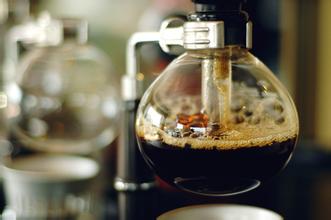Analysis of the taste of coffee what is the flavor in a cup of coffee?

Flavor [Flavor]
It is the overall impression of aroma, acidity, and alcohol. It can be used to describe the overall feeling of coffee.
Acidity
It is all the sour and strong characteristics of coffee grown in the plateau. The sour acrid is different from bitter or sour, and it has nothing to do with pH value, but it is a fresh and lively quality that promotes coffee to exert functions such as boosting the mind and cleansing the taste.
Body [Alcohol]
Is the conditioning of coffee after drinking, in the tongue to coffee leaves some taste. Alcohol varies from light to light, medium, high, fatty, and even syrupy in some Indonesian coffees.
Aroma [smell]
Aroma refers to the aroma and aroma of coffee after conditioning. Bouquet is a less commonly used word for the taste of ground coffee. Aroma is usually specific and comprehensive. Words used to describe Aroma include: caramel, charred, chocolate, fruity, grassy, malty, rich, rich, spicy, etc.
Bitter
Bitterness is a basic taste, and the sensory area is distributed in the root of the tongue. The bitterness of dark roasts is deliberately created, but the most common cause of bitterness is too much coffee powder and too little water. Bitterness is not the assent word for sour.
Bland [Light]
Coffee grown in lowlands and usually quite light and tasteless. Coffee with too little powder and too much water will also have the same light effect.
Briny
Coffee brewed, if overheated, will produce a salty taste. Some coffee shops have coffee that tastes like this.
Earthy
Usually used to describe spicy and earthy Indonesian coffee. But these references to mud do not refer to coffee beans stained with mud taste. Some commercial coffees are mixed with cheap coffee, and the muddy taste may turn dirty, apparently because of the drying and rough processing techniques used to spread the beans on the ground.
Exotic
Coffee has a unique aroma and special smell, such as flowers, fruits, spices like sweet characteristics. Coffee grown in East Africa and Indonesia usually has this characteristic.
Mellow [Aromatic Alcohol]
Coffee is an adjective used to describe coffee with low to medium acidity and good balance.
Mild
It indicates that a coffee has a harmonious and delicate flavor. Highland latin american coffee usually described as mild. It is also a term used in coffee circles to refer to all highland coffee except Brazil.
Soft
A coffee with low acidity, such as Indonesian coffee. It can also be described as aromatic or sweet.
Sour
A taste zone located primarily on the back of the tongue and characteristic of light roasted coffee.
Spicy [Spicy]
A flavor or smell reminiscent of a particular spice. A type of highland coffee (especially aged coffee) produced in Indonesia, with a sweet cardamom smell.
Strong
Technically, it describes the number of advantages and disadvantages of various tastes, or the relative proportion of coffee and water in a particular conditioning product. In colloquial usage, intense describes the intense flavor of dark roast coffee. In addition, it misleads people into the illusion that it contains a lot of caffeine. In fact, canned light coffee is high in caffeine because it contains more decaf coffee.
Sweet [Sweet]
A commonly used adjective, almost fruity in nature and associated with alcohol. Coffee grown in the highlands of Costa Rica usually has a strong flavor.
Wild
Coffee has extreme taste characteristics. If ordinary people could not accept it, they would call it odd, but it could also be an attractive feature, depending on personal preferences.
Winy
Describe an attractive flavor reminiscent of wine. Fruity acidity and smooth body, creating a special flavor contrast. Kenyan coffee is the best example of wine flavor.
Important Notice :
前街咖啡 FrontStreet Coffee has moved to new addredd:
FrontStreet Coffee Address: 315,Donghua East Road,GuangZhou
Tel:020 38364473
- Prev

Correctly understand the common sense of instant coffee
The decline and growth of coffee around the world has also led to a multi-dimensional development of coffee, and the deepest impact is the problem of instant coffee (Instant Coffee Powder Powder). Instant coffee has the characteristics of easy to use, breaking the usual bundles of brewing coffee, and quickly integrated into the food industry. The use of instant coffee in China
- Next

Health and caffeine boutique coffee culture
Whether coffee affects health is a topic of great concern to many people, and scientists have been debating it for many years. But so far, scientific research has not found conclusive evidence that moderate consumption of coffee is harmful to human health. Between 1970 and 1980, the results of this study were usually negative. Extensive media coverage makes people feel uneasy about the caffeine in their diet
Related
- Beginners will see the "Coffee pull flower" guide!
- What is the difference between ice blog purified milk and ordinary milk coffee?
- Why is the Philippines the largest producer of crops in Liberia?
- For coffee extraction, should the fine powder be retained?
- How does extracted espresso fill pressed powder? How much strength does it take to press the powder?
- How to make jasmine cold extract coffee? Is the jasmine + latte good?
- Will this little toy really make the coffee taste better? How does Lily Drip affect coffee extraction?
- Will the action of slapping the filter cup also affect coffee extraction?
- What's the difference between powder-to-water ratio and powder-to-liquid ratio?
- What is the Ethiopian local species? What does it have to do with Heirloom native species?

